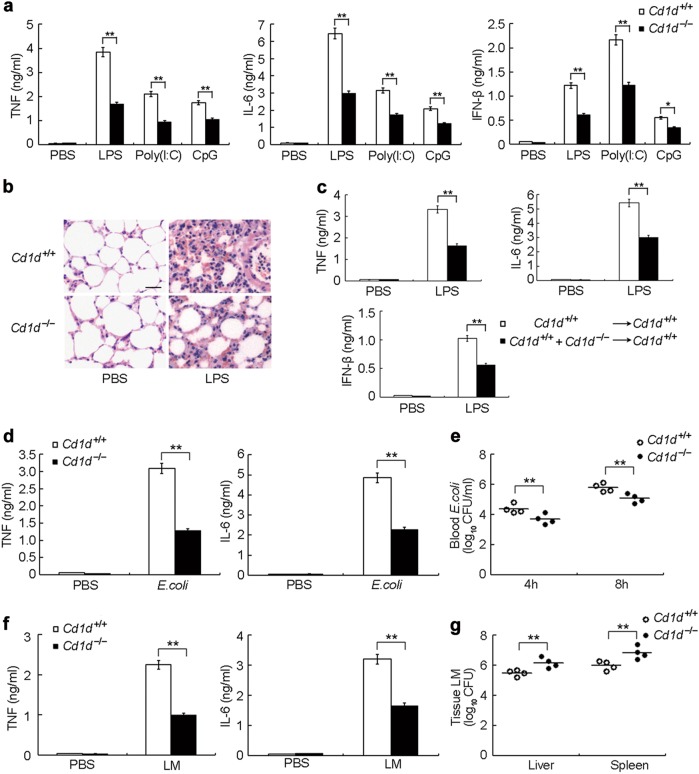Fig. 1.
CD1d deficiency protects mice from challenge with TLR ligands and pathogen infection. a ELISA of TNF, IL-6 and IFN-β in sera of Cd1d+/+ and Cd1d–/– mice (n = 5 per group) 2 h after intraperitoneal injection of LPS, Poly(I:C) or CpG-ODN (CpG). b HE staining of lungs from Cd1d+/+ and Cd1d–/– mice 8 h after intraperitoneal challenge with LPS. Scale bar, 20 μm. c Wild-type mice (n = 6 per group) were lethally irradiated and then adoptively transferred with bone marrow cells from Cd1d+/+ mice or with a 1:1 mixture of bone marrow cells from Cd1d+/+ and Cd1d–/– mice. Eight weeks later, ELISA of serum cytokines were performed 2 h after intraperitoneal injection with LPS. d ELISA of serum cytokines from Cd1d+/+ and Cd1d–/– mice (n = 4 per group) 4 h after intraperitoneal infection with 1 × 107 E. coli. e Blood bacteria load 4 h or 8 h after infection as in (d). f ELISA of serum cytokines from Cd1d+/+ and Cd1d–/– mice (n = 4 per group) 4 h after infected with 1 × 104 Listeria monocytogenes. g Bacteria loads in livers and spleens from Cd1d+/+ and Cd1d–/– mice 2 days after infection as in (f). Quantitative data are presented as the mean ± SEM. *P < 0.05 and **P < 0.01 (Student’s t-test)

